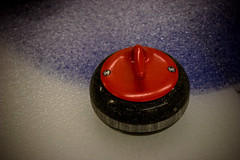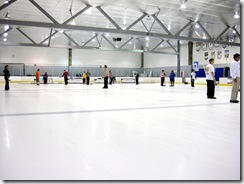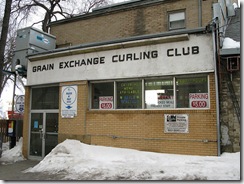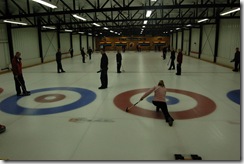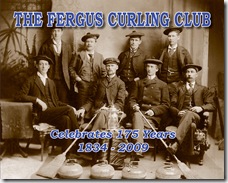 A few years ago, my essay about curling etiquette was published in The Globe and Mail. Since then, I’ve noticed it posted on the Internet periodically (without my permission, but that’s ok). People sometimes ask for permission to use it at their club, in a program for a bonspiel or for their club championships. So I figured, why not? Here it is again. Curling has changed a bit since this piece was first published, but the essence is still the same: curling etiquette really does teach rules for life.
A few years ago, my essay about curling etiquette was published in The Globe and Mail. Since then, I’ve noticed it posted on the Internet periodically (without my permission, but that’s ok). People sometimes ask for permission to use it at their club, in a program for a bonspiel or for their club championships. So I figured, why not? Here it is again. Curling has changed a bit since this piece was first published, but the essence is still the same: curling etiquette really does teach rules for life.
******
I am a curler. Ok, you can stop laughing now.
Yes, I’ve heard all the jokes about fat, out-of-shape old guys. I’ve explained to my fashion-conscious friends that we don’t wear those handknit sweaters anymore (although CBC radio host Bill Richardson recently caused a near-riot on his show when he refused to return one of those classic sweaters, bought in a thrift shop in Saskatchewan, to its original owner). I’ve patiently outlined the strategy of the game, which has more to do with chess than shuffleboard. I’ve tried to convince the cross-training, weight-lifting, aerobics set that 10 ends of sweeping draw shots into the eight-foot around a centre guard most certainly provides a more than adequate workout for the cardiovascular and muscular systems. I’ve dared detractors of the roaring game to get down in the hack and throw a perfect draw to the button – to which most reply, “Why would I want to?”
Yes, I’ve heard it all. But you will never convince me that curling isn’t one of the greatest games on earth, and it’s all because of etiquette.
I took up curling at the old age of 35. My childhood had been spent in curling clubs watching my parents indulge their passion for the sport. Toronto’s CFB Downsview was their home club, and it was a drab, boring place for a little girl to spend countless Saturday and Sunday afternoons. Sometimes I stayed home with my older brothers while my parents went off to bonspiels and competitions. One of my older brothers once wrote a school essay entitled “I Am A Curling Orphan.” We all hated the game that our parents loved so much. None of us took it up.
But of course things change. My husband and I moved, with our daughter, to a small town in eastern Ontario where my mother was living and where I had some other family connections. Vankleek Hill boasts a population of 1800 and sits on top of a hill surrounded by farmland in all directions. Ottawa is an hour away in one direction, and Montreal is an hour in the other direction. There isn’t much to do in the winter, apart from shoveling vast amounts of snow, and we wanted to find a way to meet and socialize with our new neighbours, so on the advice of my still curling-mad mom (now a spectator rather than a player), we joined the local curling club. It changed my life.
For one thing, I found out I was good at it. After the first awkward games, I started to get the feel for the ice, for throwing a rock with the right weight and the right turn. I discovered that I was a pretty good sweeper too. My mom would come to watch my games and I would see her there, beer and cigarette in hand, behind the glass. She never said it, but the “I told you so” was glowing in an invisible speech bubble right over her head.
Right from the start, my curling colleagues started teaching me about perhaps the most important part of the game: curling etiquette. Shake hands before - and after - the game.
Stand still when the other team is throwing. Admit it if you touch a rock with your broom, even though that rock must be removed from play (often to your own team’s disadvantage). Don’t jump in the air and celebrate when the other team misses a shot. Compliment good shots, no matter which team makes them. Respect your opponent.
Curling in a small town, in a two-sheet club, brings you into contact with all sorts of people. My first skip was a farmer (who missed the first game of the season because he was in Toronto showing cows at the Royal Winter Fair). The highschool principal was a teammate, as were, at various times throughout my years in Vankleek Hill, a nurse, lots of teachers, a labour relations negotiator, the town lawyer, the bank manager, the lady who ran the dress shop on Main Street, various highschool students, stay-at-home moms, retired seniors and many farmers, who often arrived late for the first game of the evening because they had to finish milking. Out on the ice, it didn’t matter who you were outside the walls of the club: young or old, male or female, employed or not, English or French. It didn’t even matter if you were a good curler. We played our games, shook hands, and sat down in the lounge while the winners bought the losers a drink – another example of curling etiquette.
Yes, it may look like a funny game, but the lessons learned from curling can take a person a long way. Or not. I was helping out for the first time in a Sunday afternoon junior program recently. A young curler was breaking some basic rules and I stopped to correct him, at which point he became rude and aggressive. He was surly to his teammates and to me. I asked one of the organizers how much curling etiquette they had been teaching, and the man shrugged and said not much, since the kids have so much to think about while trying to get that rock down the ice.
I looked at that young boy, maybe 10 or 11 years old, and thought to myself, “Young man, you’re not going to get too far in this game.”
And he won’t get too far in life either, with attitude like that. Imagine if everyone respected their teammates and opponents in life, shook hands after every confrontation and bought each other a drink. Imagine if we all stood still while others were concentrating on their life’s work, offering encouragement not distraction. Imagine if we celebrated our opponents’, as well as our own, accomplishments.
No, it’s not a perfect world, but it could be. And it is – on a sheet of curling ice.
*******

